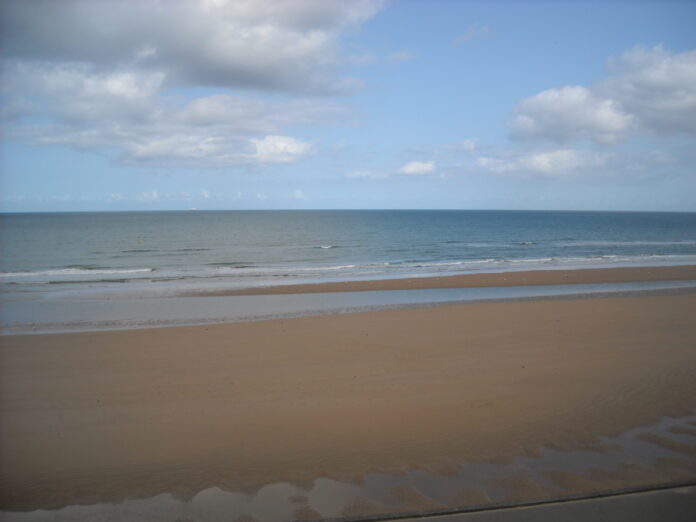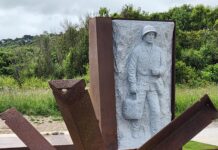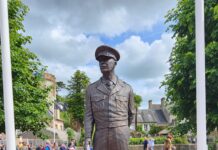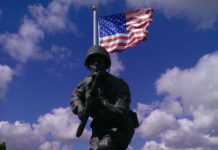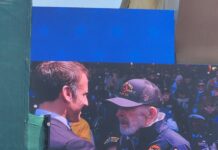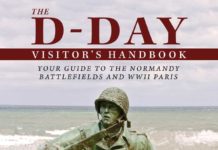2nd in the Series…
IV
After baulking at American proposals for eighteen months, serious planning for a cross-Channel attack began in December of 1943, after the Tehran Conference, during which Roosevelt and Churchill assured Soviet Secretary Joseph Stalin that it would jump off in the spring of 1944. In March1943, the Imperial General Staff had established a command in London under Gen. Frederick Morgan codenamed COSSAC (Chief of Staff to the Supreme Allied Commander). Of course, no Supreme Commander had yet been named, nevertheless Morgan’s team began planning with the military assets it then had available. The scheme they devised called for a four-division (three by sea; one by air) assault on the Normandy coast west the small port of Caen. Morgan’s planners felt that the more obvious area for the attack, the Pas-de-Calais, was too well defended because Oberkommando der Wehrmacht (OKW), Hitler’s high command, expected the attempt to be made there, the shortest invasion route.
To fix the German attention on the coastline around Calais, British intelligence organizations concocted an elaborate deception plan, codenamed “Fortitude,” which involved creating a fictitious army complete with fake radio transmissions and dummy vehicles in northern England. And it worked. Most of the best German divisions were poised to repulse an attack in the Pas-de-Calais and remained there long after D-Day when it should have been obvious that the main Allied attack had already come in Normandy.
In late December 1943, President Roosevelt chose Gen. Dwight Eisenhower to be Supreme Commander and Prime Minister Churchill named Gen. Bernard L. Montgomery to serve under him as field commander of the 21st Army Group during the opening phases of what was now designated as Operation Overlord. In mid-January, when Ike and Monty met in London for the first time since their appointments, both expressed dissatisfaction with the COSSAC plan and quickly agreed to increase the weight of the assault to eight divisions, three of which were airborne and to add a fifth landing beach, codenamed Utah, at the base of the Cotentin peninsula that would allow a rapid drive north to capture Cherbourg, a port that the Overlord planners considered logistically vital.
Once the details of Operation Overlord—of which Operation Neptune was the seaborne assault phase—began to fall in place, the Allied order of battle was locked in. Of the five beaches, the Americans were assigned the two western-most, mainly because they were already bivouacked in the English West Country. The Utah Beach assault was the task of the 8th RCT (U.S. 4th ID). The large gap between the British Commonwealth beaches (designated Gold, Juno and Sword) to the east was filled by an American assault over a five mile, gently curving beach, enclosed at both ends by steep cliffs, between the villages of le Gran-Hameau and Vierville-sur-Mer. It was not going to be an easy task. At high tide (and the spring tides in Normandy run to 18 feet) the waves lapped against a high shingle bank composed of slippery, rounded stones that neither tracked nor wheeled vehicles could clamber up. A low seawall delineated much of the western strand from a length of flat, marshy ground that extended to the base of the steep, high, brush-covered bluff. Four draws pierced the bluff (designated from east to west as E-3, E-3, D-3 and D-1 (a smaller, steep draw, F-1, broke the bluff line further to the east) that would have to be captured and improved so that the thousands of men and vehicles being landed could advance past the bluff to their D-Day phase line further inland on the relatively flat expanse of pasture and farmland above. The only improved road ran up the D-1 draw at the west end of Dog Green sector to the village of Vierville. It was such an obvious point of attack that the Germans had blocked the road with a massive, 12-foot high reinforced-concrete wall, built casemated gun emplacements on the beach and the bluff top, dug anti-tank ditches and then mined the whole area.
V
There was no question that the Germans were anticipating a cross channel attack in the spring of 1944—but where would it come and how best to meet it were their key, unanswered questions. The prevailing opinion at OKW was that the attack would be made at the Channel’s narrowest point, the Pas-de-Calais. Hitler disagreed, opting instead for Normandy or Brittany as more likely. Bowing to Hitler’s intuition, the 6th Parachute Regiment, a first-line unit, had been redeployed to Normandy and now occupied a critical position near Carentan between the two American beaches. The Ost 716th division, a static formation without mobility, the ranks of which were filled mostly with Russian and Pole former prisoners of war commanded by ethnic Germans who were either too old or now infirm (wounded veterans) to serve in first-line units, manned the beach fortifications. Inexplicably, undiscovered by Allied intelligence, elements of the 352nd infantry division, a first-line unit previously bivouacked near St.-Lô, had been moved into supporting positions behind Omaha Beach. In addition, the 21st Panzer and 12th SS Panzer Divisions were bivouacked south of Caen within striking distance of Juno and Sword beaches. Fortunately, on D-Day, these considerable assets were eventually squandered by the German command structure extending all the way back to Hitler.
The units mentioned above were nominally part of the German Seventh Army, commanded by Generaloberst Friedrich Dollmann, who was outranked by his immediate and more famous superiors, Generalfeldmarschalls Erwin Rommel and Gerd von Rundstedt. Holding what amounted to a separate command, General der Panzertruppen Leo Freiheer Geyr von Schweppenburg, controlled the seven Panzer divisions of the OKW reserve, while the Führer reserved the sole authority to commit them to the battle.
To confuse matters even more, there was no real agreement on how the defense of the Atlantic Wall should be conducted. Rundstedt and von Geyr believed that the decisive battle should be fought well inland from the beaches, beyond the range of naval guns, so the Panzer divisions could use their mobility to the best effect. Erwin Rommel was the outlier. His experience in the North African desert had taught him that so long as the Allies controlled the air space over the battlefield, daylight movement of armored and motorized forces would be impossible. He argued that the Panzers should be positioned as close to the coast as possible where they could counterattack the landing when it was most vulnerable and defeat it at the waterline.
The failure to resolve this critical strategic issue had real consequences for the D-Day battle.
The Germans did not expect the invasion to begin in the early morning hours of June 6th. Their weather forecasters, unable to utilize air reconnaissance over the North Sea, knew nothing of coming break in the weather forecast by Group Captain Stagg. They relaxed their guard enough for Rommel to absent himself from his headquarters at La Roche Guyon long enough for a quick trip to confer with Hitler at his East Prussia HQ and spend a day with his wife celebrating her birthday. Many junior officers were in Rennes attending a map exercise.
When Oberst Hans von Luck, commander of the 125th Panzer Grenadier Regiment, part the 21st Panzer Division, received reports of airborne landings in the early morning of June 6, he immediately put his regiment on alert (one battalion had been out on a night training exercise with blank ammunition) waiting for the order to attack. No order came. The Fürher, a habitual night owl, was sleeping in late that morning and no one wanted to wake him. Hours later, at 1600, when the order releasing Luck’s armor finally came, the 21st Panzers attacked through the gap between the Canadians landing on Juno Beach and the British coming ashore to their east. German tanks penetrated all the way to the sea, before being forced to pull back. To complete the SNAFU, Generalleutnant Edgar Feuchtinger, the artilleryman commanding the Division, was away in Paris, likely visiting his mistress. Then, many years later Luck discovered that there had been an un-disseminated standing order allowing the 21st Panzers to attack immediately on notification of an airborne attack.
In fact, critical German forces, whether it be the two Panzer Divisions in the Caen area, the 352nd Infantry Division or the 6th Parachute Regiment, were all mishandled, ineffectively fed into the growing battle piecemeal.
The 6th Parachute Regiment was one of the crack German units in Normandy. Commanded by a legendary combat officer, Friedrich-August Freiherr von der Heydte, it numbered just under 3,500 men, with an average enlisted age of 17.5. They were well armed, but had only 70 trucks of 50 different models for transportation. Von der Heydte ordered it to counterattack American airborne forces around Carentan by battalions, which became separated and were overrun by GIs from the 8th Infantry advancing inland from Utah Beach. The 1st Battalion stumbled into paratroopers from the 101st AD, surrendering almost to a man.



